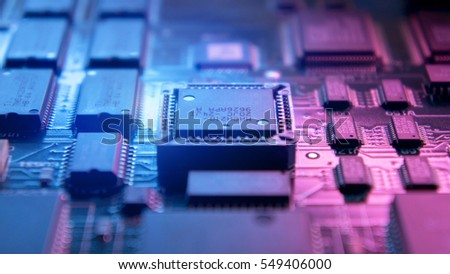
Welcome to the exciting world of Electronic Components. In today’s digital age, these tiny yet powerful devices are the building blocks of modern technology. From the smartphones in our pockets to the advanced machinery in factories, electronic components play a vital role in making our lives easier and more connected.
Whether you’re a seasoned engineer or a curious beginner, understanding the functions and capabilities of electronic components can be empowering. With a little guidance, you can unlock the potential of these components to create innovative gadgets, improve existing systems, or simply gain a deeper appreciation for the technology that surrounds us. Let’s delve into the realm of electronic components and explore the endless possibilities they offer.
Types of Electronic Components
When it comes to electronic components, there is a wide array to choose from. One common type is resistors. These components restrict the flow of electrical current and are crucial in controlling voltage levels within a circuit. Capacitors are another vital component, storing and releasing electrical energy as needed. Inductors, on the other hand, resist changes in current and can store energy in the form of a magnetic field.
Another essential type of electronic component is the diode. Diodes allow current to flow in one direction only, acting as one-way valves in a circuit. Transistors play a significant role in amplifying and switching electrical signals. They can be considered the building blocks of modern electronics. Integrated circuits, or ICs, combine multiple components into a single package, offering compact and efficient solutions for various electronic applications.
Furthermore, sensors are electronic components that detect changes in their surroundings and provide corresponding outputs. They are widely used in automation, robotics, and other technological fields. LEDs, or Light Emitting Diodes, are versatile components that emit light when current passes through them. They are commonly used in displays, indicators, and lighting applications.
Key Considerations in Selecting Components
When choosing electronic components, it is crucial to first determine the specific requirements of your project or device. Understanding the technical specifications and performance characteristics needed will help you identify the right components for the job.
Next, consider the reliability and quality of the components. Opting for reputable brands and suppliers can ensure that you are using components that meet industry standards and have undergone rigorous testing for performance and durability.
Lastly, keep cost in mind while selecting components. Balancing performance and quality with budget constraints is essential. Compare prices from different suppliers and manufacturers to find the best value without compromising on the functionality of the components.
Latest Trends in Electronic Components
One of the emerging trends in electronic components is miniaturization. Manufacturers are continuously striving to make components smaller without compromising performance. This trend is driven by the demand for compact and lightweight electronic devices.
Another significant trend is the integration of multiple functions into a single component. This approach, known as system-on-chip (SoC) design, allows for more efficient use of space within devices while reducing power consumption. As technology advances, we can expect to see even more complex components with increased functionality.
Advancements in materials science are also shaping the future of electronic components. Researchers are exploring novel materials with unique properties that can enhance the performance and durability of components. From flexible electronics to self-healing materials, these advancements are opening up new possibilities for the design and functionality of electronic devices.